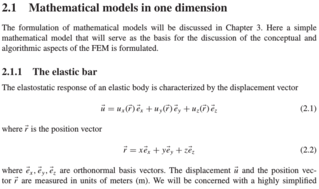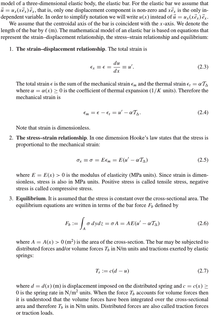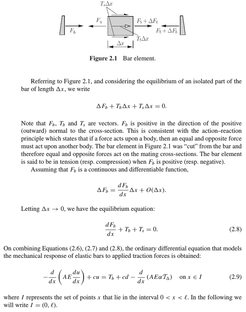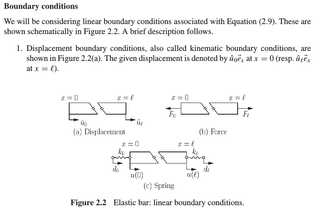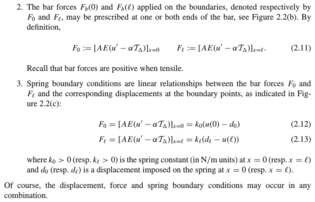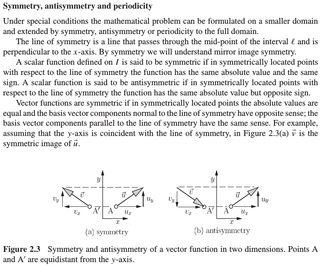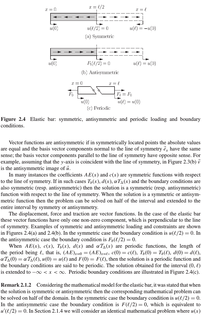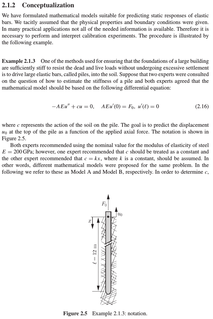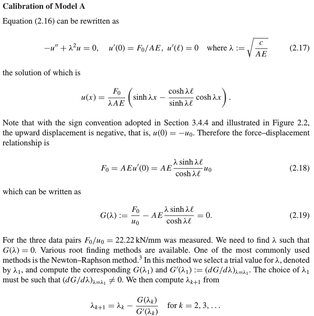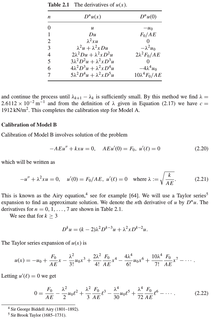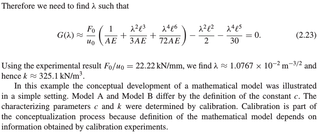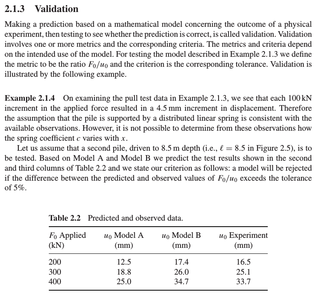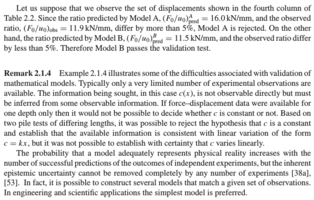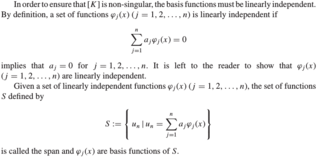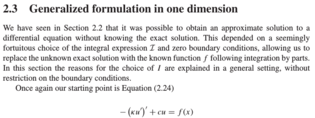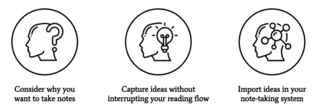Edited, memorised or added to reading queue
on 29-Apr-2021 (Thu)
Do you want BuboFlash to help you learning these things? Click here to log in or create user.
| status | not read | reprioritisations | ||
|---|---|---|---|---|
| last reprioritisation on | suggested re-reading day | |||
| started reading on | finished reading on |
Lease - Wikipedia
nged and removed. Find sources: "Lease" – news · newspapers · books · scholar · JSTOR (June 2014) (Learn how and when to remove this template message) A sign in Chicago offering space for lease <span>A lease is a contractual arrangement calling for the lessee (user) to pay the lessor (owner) for use of an asset.[1] Property, buildings and vehicles are common assets that are leased. Industrial or business equipment is also leased. Broadly put, a lease agreement is a contract between two parties
| status | not read | reprioritisations | ||
|---|---|---|---|---|
| last reprioritisation on | suggested re-reading day | |||
| started reading on | finished reading on |
Lease - Wikipedia
ngs and vehicles are common assets that are leased. Industrial or business equipment is also leased. Broadly put, a lease agreement is a contract between two parties, the lessor and the lessee. <span>The lessor is the legal owner of the asset, while the lessee obtains the right to use the asset in return for regular rental payments.[2] The lessee also agrees to abide by various conditions regarding their use of the property or equipment. For example, a person leasing a car may agree to the condition that the car w
| status | not read | reprioritisations | ||
|---|---|---|---|---|
| last reprioritisation on | suggested re-reading day | |||
| started reading on | finished reading on |
Lease - Wikipedia
rights to assign exist by compulsory law or as a default position in some jurisdictions. Sharing or parting with possession can be a breach of certain leases resulting in action for forfeiture. <span>Enfranchisement is the obtaining of the landlord's title and is most commonly negotiated with the landlord where a tenant pays only a ground rent. Merger is where the landlord and tenant happen to be the same and can terminate a lease where there are no subtenants in certain jurisdictions. In the United States a lessee may negotia
| status | not read | reprioritisations | ||
|---|---|---|---|---|
| last reprioritisation on | suggested re-reading day | |||
| started reading on | finished reading on |
Lease - Wikipedia
the travel industry as a less expensive alternative for travelers and locals. Equipment leasing[edit] Leasing is also used as a form of financing to acquire equipment for use and purchase.[18] <span>Many organizations and companies use lease financing for the acquisition and use of many types of equipment, including manufacturing and mining machinery, vessels and containers, construction and off-road equipment, medical technology and equipment, agricultural equipment, aircraft, rail cars and rolling stock, trucks and transportation equipment, business, retail and office equipment, IT equipment and software.[18] Lease financing for equipment is generally provided by banks, captives[clarification needed] and independent finance companies.[19][20] See also[edit] Ecoleasing Finance lease Lease
Flashcard 6373323705612
| status | not learned | measured difficulty | 37% [default] | last interval [days] | |||
|---|---|---|---|---|---|---|---|
| repetition number in this series | 0 | memorised on | scheduled repetition | ||||
| scheduled repetition interval | last repetition or drill |
Parent (intermediate) annotation
Open itA lease is a contractual arrangement calling for the lessee (user) to pay the lessor (owner) for use of an asset
Original toplevel document
Lease - Wikipedianged and removed. Find sources: "Lease" – news · newspapers · books · scholar · JSTOR (June 2014) (Learn how and when to remove this template message) A sign in Chicago offering space for lease <span>A lease is a contractual arrangement calling for the lessee (user) to pay the lessor (owner) for use of an asset.[1] Property, buildings and vehicles are common assets that are leased. Industrial or business equipment is also leased. Broadly put, a lease agreement is a contract between two parties
Flashcard 6373330521356
| status | not learned | measured difficulty | 37% [default] | last interval [days] | |||
|---|---|---|---|---|---|---|---|
| repetition number in this series | 0 | memorised on | scheduled repetition | ||||
| scheduled repetition interval | last repetition or drill |
Parent (intermediate) annotation
Open itA lease is a contractual arrangement calling for the lessee (user) to pay the lessor (owner) for use of an asset
Original toplevel document
Lease - Wikipedianged and removed. Find sources: "Lease" – news · newspapers · books · scholar · JSTOR (June 2014) (Learn how and when to remove this template message) A sign in Chicago offering space for lease <span>A lease is a contractual arrangement calling for the lessee (user) to pay the lessor (owner) for use of an asset.[1] Property, buildings and vehicles are common assets that are leased. Industrial or business equipment is also leased. Broadly put, a lease agreement is a contract between two parties
Flashcard 6373336812812
| status | not learned | measured difficulty | 37% [default] | last interval [days] | |||
|---|---|---|---|---|---|---|---|
| repetition number in this series | 0 | memorised on | scheduled repetition | ||||
| scheduled repetition interval | last repetition or drill |
Flashcard 6373344677132
| status | not learned | measured difficulty | 37% [default] | last interval [days] | |||
|---|---|---|---|---|---|---|---|
| repetition number in this series | 0 | memorised on | scheduled repetition | ||||
| scheduled repetition interval | last repetition or drill |
| status | not read | reprioritisations | ||
|---|---|---|---|---|
| last reprioritisation on | suggested re-reading day | |||
| started reading on | finished reading on |
| status | not read | reprioritisations | ||
|---|---|---|---|---|
| last reprioritisation on | suggested re-reading day | |||
| started reading on | finished reading on |
| status | not read | reprioritisations | ||
|---|---|---|---|---|
| last reprioritisation on | suggested re-reading day | |||
| started reading on | finished reading on |
| status | not read | reprioritisations | ||
|---|---|---|---|---|
| last reprioritisation on | suggested re-reading day | |||
| started reading on | finished reading on |
| status | not read | reprioritisations | ||
|---|---|---|---|---|
| last reprioritisation on | suggested re-reading day | |||
| started reading on | finished reading on |
Flashcard 6374045125900
| status | not learned | measured difficulty | 37% [default] | last interval [days] | |||
|---|---|---|---|---|---|---|---|
| repetition number in this series | 0 | memorised on | scheduled repetition | ||||
| scheduled repetition interval | last repetition or drill |
Parent (intermediate) annotation
Open itFor distributed generation solar photovoltaic (“PV”) installations, the on-site nature of the project is typically a far larger complicating factor than the intermittent nature of its output. Unlike larger utility-scale projects, distributed generation solar PV may be loc
Original toplevel document (pdf)
cannot see any pdfsFlashcard 6374046698764
| status | not learned | measured difficulty | 37% [default] | last interval [days] | |||
|---|---|---|---|---|---|---|---|
| repetition number in this series | 0 | memorised on | scheduled repetition | ||||
| scheduled repetition interval | last repetition or drill |
Parent (intermediate) annotation
Open itFor distributed generation solar photovoltaic (“PV”) installations, the on-site nature of the project is typically a far larger complicating factor than the intermittent nature of its output. Unlike larger utility-scale projects, distributed generation solar PV may be located in either urban or rural areas, on rooftops or on the ground, on larger struct
Original toplevel document (pdf)
cannot see any pdfs| status | not read | reprioritisations | ||
|---|---|---|---|---|
| last reprioritisation on | suggested re-reading day | |||
| started reading on | finished reading on |
Unbounded learning: how to unshackle your education - Ness Labs
rful Brain Tools for Thought Menu Item Separator Become a member Community Academy Member Login Unbounded learning: how to unshackle your education Anne-Laure Le Cunff • Reading time: 5 minutes <span>While bounded learning is based on a fixed curriculum with specific educational outcomes, unbounded learning embraces the never-ending cycle of personal growth generated by continuous education. It is based on strategies and tools that avoid unnecessary direction and restriction, that foster curiosity, and that reward exploring adjacent questions. Today’s world offers many opportunities for unbounded learning, including online courses, community-based learning platforms, and new tools for thought to connect ideas across many rese
| status | not read | reprioritisations | ||
|---|---|---|---|---|
| last reprioritisation on | suggested re-reading day | |||
| started reading on | finished reading on |
Unbounded learning: how to unshackle your education - Ness Labs
ers, we need to unshackle our self-education. The benefits of unbounded learning One of the main benefits of unbounded learning is to cut out the “middleman” of traditional knowledge providers. <span>As Judy Nagy and Chris Bigum write in the Online Journal of Distance Education: “The advent of computing and communication technologies provides knowledge workers and the consumers of their products with alternative means of production and distribution, thereby directly challenging the role of publishers. Publishing on the Internet significantly reduces the time it takes for a consumer to obtain a product. The use of the Internet in this way highlights the role of publishers as essentially the middleman in the knowledge production and dissemination of knowledge products.” Instead of relying on the guidance of a middleman, unbounded learning encourages students to directly access knowledge they find relevant to their goals, whether it neatly fits within a
| status | not read | reprioritisations | ||
|---|---|---|---|---|
| last reprioritisation on | suggested re-reading day | |||
| started reading on | finished reading on |
Unbounded learning: how to unshackle your education - Ness Labs
hology, or the impact of online communities on local governance? You can pick and choose the best content from various institutions or independent teachers, and craft your own learning journey. <span>Another advantage is serendipity: you may never know what doors a specific research path may lead you to. By allowing your education to branch off in virtually any direction, you may discover new areas of knowledge you could not predict when you started your learning journey. Studying finance may draw you to study cognitive biases; learning about history may lead you to explore a niche artistic movement; teaching yourself how to cook may unlock a wealth of c
| status | not read | reprioritisations | ||
|---|---|---|---|---|
| last reprioritisation on | suggested re-reading day | |||
| started reading on | finished reading on |
Unbounded learning: how to unshackle your education - Ness Labs
ght can emerge over time, and that learning together is more beneficial than learning on your own. Here are a few practical strategies you can apply to break free from linear, bounded learning: <span>Study the source material. Whenever you read an interesting article or a book, check the references to access the original source of knowledge. Then, check the references of these sources. You can go many levels deeper by exploring sources both horizontally and vertically. You can even paste the source into Connected Papers to generate a map of reference papers to explore further. Mix and match the content to fit your needs. Don’t stick to just one course or one book to study a topic. Try different platforms, formats, and educators and keep the ones that work bes
| status | not read | reprioritisations | ||
|---|---|---|---|---|
| last reprioritisation on | suggested re-reading day | |||
| started reading on | finished reading on |
Unbounded learning: how to unshackle your education - Ness Labs
ou can go many levels deeper by exploring sources both horizontally and vertically. You can even paste the source into Connected Papers to generate a map of reference papers to explore further. <span>Mix and match the content to fit your needs. Don’t stick to just one course or one book to study a topic. Try different platforms, formats, and educators and keep the ones that work best for you. You could listen to a podcast from an expert, read a book by another, follow the tweets of a fellow student, and practice with tutorials you found on the web. Use thinking tools for unbounded learning. While some note-taking tools are designed for linear thinking, others offer features that support the emergence of new patterns of thought. Fo
| status | not read | reprioritisations | ||
|---|---|---|---|---|
| last reprioritisation on | suggested re-reading day | |||
| started reading on | finished reading on |
Unbounded learning: how to unshackle your education - Ness Labs
p the ones that work best for you. You could listen to a podcast from an expert, read a book by another, follow the tweets of a fellow student, and practice with tutorials you found on the web. <span>Use thinking tools for unbounded learning. While some note-taking tools are designed for linear thinking, others offer features that support the emergence of new patterns of thought. For instance, Roam is one such tool, but there are many alternatives you can explore. Look for features such as bi-directional links and a knowledge graph to explore and connect ideas across several domains of study. Learn in public. One of the easiest ways to unbound your education is to learn with others. Whether you have a study buddy or a Twitter account, document your learning journey and ask q
| status | not read | reprioritisations | ||
|---|---|---|---|---|
| last reprioritisation on | suggested re-reading day | |||
| started reading on | finished reading on |
Unbounded learning: how to unshackle your education - Ness Labs
ne such tool, but there are many alternatives you can explore. Look for features such as bi-directional links and a knowledge graph to explore and connect ideas across several domains of study. <span>Learn in public. One of the easiest ways to unbound your education is to learn with others. Whether you have a study buddy or a Twitter account, document your learning journey and ask questions along the way. Learned a new way to code a feature for your app, or a new psychological theory that may be helpful to marketers? Write a short tutorial and publish it online. Struggling with a concept? Post a tweet to see if someone can help clarify. You will discover fresh ways of thinking, and even maybe make some new friends. Practice self-reflection. Make sure to avoid falling into the trap of linear learning, where we mindlessly climb the education ladder without questioning our processes. Metacognition is
| status | not read | reprioritisations | ||
|---|---|---|---|---|
| last reprioritisation on | suggested re-reading day | |||
| started reading on | finished reading on |
Unbounded learning: how to unshackle your education - Ness Labs
short tutorial and publish it online. Struggling with a concept? Post a tweet to see if someone can help clarify. You will discover fresh ways of thinking, and even maybe make some new friends. <span>Practice self-reflection. Make sure to avoid falling into the trap of linear learning, where we mindlessly climb the education ladder without questioning our processes. Metacognition is an essential skill for unbounded learning. It could take the form of journaling or a weekly review, or even regular brainstorming sessions with another self-taught student. Fail like a scientist by learning from your mistakes and by expanding your knowledge with continuous experiments. Again, the most important aspect of unbounded learning is your mindset. As long as you believe you can design an unbounded learning environment for yourself, and as long as you keep on
| status | not read | reprioritisations | ||
|---|---|---|---|---|
| last reprioritisation on | suggested re-reading day | |||
| started reading on | finished reading on |
| status | not read | reprioritisations | ||
|---|---|---|---|---|
| last reprioritisation on | suggested re-reading day | |||
| started reading on | finished reading on |
| status | not read | reprioritisations | ||
|---|---|---|---|---|
| last reprioritisation on | suggested re-reading day | |||
| started reading on | finished reading on |
| status | not read | reprioritisations | ||
|---|---|---|---|---|
| last reprioritisation on | suggested re-reading day | |||
| started reading on | finished reading on |
Neutron - Wikipedia
arly within the nucleus, and each has a mass of approximately one atomic mass unit, they are both referred to as nucleons.[7] Their properties and interactions are described by nuclear physics. <span>The chemical properties of an atom are mostly determined by the configuration of electrons that orbit the atom's heavy nucleus. The electron configuration is determined by the charge of the nucleus, which is determined by the number of protons, or atomic number. The number of neutrons is the neutron number. Neut
| status | not read | reprioritisations | ||
|---|---|---|---|---|
| last reprioritisation on | suggested re-reading day | |||
| started reading on | finished reading on |
| status | not read | reprioritisations | ||
|---|---|---|---|---|
| last reprioritisation on | suggested re-reading day | |||
| started reading on | finished reading on |
Connected Papers: a visual tool for academic research - Ness Labs
exploring connections between research papers is fairly tedious: read the paper, scan the references, search for any relevant title, rinse and repeat. Connected Papers aims to shake things up. <span>Connected Papers is a tool for thought to help researchers and applied scientists find and explore papers relevant to their field of work in a visual way. You enter an origin paper, and they generate a graph. To achieve this, they analyse about 50,000 research papers, and select the ones with the strongest connections to the origin paper. Created by Alex Tarnavsky, Eitan Eddie Smolyansky, and Itay Knaan Harpaz from Israel, Connected Papers started as a weekend side project. But when the three friends realised how useful
| status | not read | reprioritisations | ||
|---|---|---|---|---|
| last reprioritisation on | suggested re-reading day | |||
| started reading on | finished reading on |
Teaching Smart People How to Learn
closed-loop reasoning that had characterized so many prior discussions. Any company that aspires to succeed in the tougher business environment of the 1990s must first resolve a basic dilemma: <span>success in the marketplace increasingly depends on learning, yet most people don’t know how to learn. What’s more, those members of the organization that many assume to be the best at learning are, in fact, not very good at it. I am talking about the well-educated, high-powered, high-commitment professionals who occupy key leadership positions in the modern corporation. Most companies not only have tremendous
| status | not read | reprioritisations | ||
|---|---|---|---|---|
| last reprioritisation on | suggested re-reading day | |||
| started reading on | finished reading on |
Teaching Smart People How to Learn
t at learning are, in fact, not very good at it. I am talking about the well-educated, high-powered, high-commitment professionals who occupy key leadership positions in the modern corporation. <span>Most companies not only have tremendous difficulty addressing this learning dilemma; they aren’t even aware that it exists. The reason: they misunderstand what learning is and how to bring it about. As a result, they tend to make two mistakes in their efforts to become a learning organization. First, most people define learning too narrowly as mere “problem solving,” so they focus
| status | not read | reprioritisations | ||
|---|---|---|---|---|
| last reprioritisation on | suggested re-reading day | |||
| started reading on | finished reading on |
Teaching Smart People How to Learn
aware that it exists. The reason: they misunderstand what learning is and how to bring it about. As a result, they tend to make two mistakes in their efforts to become a learning organization. <span>First, most people define learning too narrowly as mere “problem solving,” so they focus on identifying and correcting errors in the external environment. Solving problems is important. But if learning is to persist, managers and employees must also look inward. They need to reflect critically on their own behavior, identify the ways they often inadvertently contribute to the organization’s problems, and then change how they act. In particular, they must learn how the very way they go about defining and solving problems can be a source of problems in its own right. I have coined the terms “single loop” and “double loop” learning to capture this crucial distinction. To give a simple analogy: a thermostat that automatically turns on the heat wheneve
| status | not read | reprioritisations | ||
|---|---|---|---|---|
| last reprioritisation on | suggested re-reading day | |||
| started reading on | finished reading on |
Teaching Smart People How to Learn
nd solving problems can be a source of problems in its own right. I have coined the terms “single loop” and “double loop” learning to capture this crucial distinction. To give a simple analogy: <span>a thermostat that automatically turns on the heat whenever the temperature in a room drops below 68 degrees is a good example of single-loop learning. A thermostat that could ask, “Why am I set at 68 degrees?” and then explore whether or not some other temperature might more economically achieve the goal of heating the room would be engaging in double-loop learning. Highly skilled professionals are frequently very good at single-loop learning. After all, they have spent much of their lives acquiring academic credentials, mastering one or a number o
| status | not read | reprioritisations | ||
|---|---|---|---|---|
| last reprioritisation on | suggested re-reading day | |||
| started reading on | finished reading on |
Teaching Smart People How to Learn
al disciplines, and applying those disciplines to solve real-world problems. But ironically, this very fact helps explain why professionals are often so bad at double-loop learning. Put simply, <span>because many professionals are almost always successful at what they do, they rarely experience failure. And because they have rarely failed, they have never learned how to learn from failure. So whenever their single-loop learning strategies go wrong, they become defensive, screen out criticism, and put the “blame” on anyone and everyone but themselves. In short, their ability to learn shuts down precisely at the moment they need it the most. The propensity among professionals to behave defensively helps shed light on the second mistake that companies make about learning. The common assumption is that getting people to learn
| status | not read | reprioritisations | ||
|---|---|---|---|---|
| last reprioritisation on | suggested re-reading day | |||
| started reading on | finished reading on |
Teaching Smart People How to Learn
anies focus on creating new organizational structures—compensation programs, performance reviews, corporate cultures, and the like—that are designed to create motivated and committed employees. <span>But effective double-loop learning is not simply a function of how people feel. It is a reflection of how they think—that is, the cognitive rules or reasoning they use to design and implement their actions. Think of these rules as a kind of “master program” stored in the brain, governing all behavior. Defensive reasoning can block learning even when the individual commitment to it is high,
| status | not read | reprioritisations | ||
|---|---|---|---|---|
| last reprioritisation on | suggested re-reading day | |||
| started reading on | finished reading on |
Teaching Smart People How to Learn
ing can block learning even when the individual commitment to it is high, just as a computer program with hidden bugs can produce results exactly the opposite of what its designers had planned. <span>Companies can learn how to resolve the learning dilemma. What it takes is to make the ways managers and employees reason about their behavior a focus of organizational learning and continuous improvement programs. Teaching people how to reason about their behavior in new and more effective ways breaks down the defenses that block learning. All of the examples that follow involve a particular kind of professional: fast-track consultants at major management consulting companies. But the implications of my argument go far be
| status | not read | reprioritisations | ||
|---|---|---|---|---|
| last reprioritisation on | suggested re-reading day | |||
| started reading on | finished reading on |
Teaching Smart People How to Learn
ctive, they weren’t resisting; they were focusing on the “real” causes. Indeed, they were to be respected, if not congratulated, for working as well as they did under such difficult conditions. <span>It’s not enough to talk candidly. Professionals can still find themselves talking past each other. The end result was an unproductive parallel conversation. Both the manager and the professionals were candid; they expressed their views forcefully. But they talked past each other, nev
| status | not read | reprioritisations | ||
|---|---|---|---|---|
| last reprioritisation on | suggested re-reading day | |||
| started reading on | finished reading on |
Teaching Smart People How to Learn
how they actually behave. For example, the professionals on the case team said they believed in continuous improvement, and yet they consistently acted in ways that made improvement impossible. <span>When you observe people’s behavior and try to come up with rules that would make sense of it, you discover a very different theory of action—what I call the individual’s “theory-in-use.” Put simply, people consistently act inconsistently, unaware of the contradiction between their espoused theory and their theory-in-use, between the way they think they are acting and the way they really act. What’s more, most theories-in-use rest on the same set of governing values. There seems to be a universal human tendency to design one’s actions consistently according to four basic val
Flashcard 6374176197900
| status | not learned | measured difficulty | 37% [default] | last interval [days] | |||
|---|---|---|---|---|---|---|---|
| repetition number in this series | 0 | memorised on | scheduled repetition | ||||
| scheduled repetition interval | last repetition or drill |
Flashcard 6374183537932
| status | not learned | measured difficulty | 37% [default] | last interval [days] | |||
|---|---|---|---|---|---|---|---|
| repetition number in this series | 0 | memorised on | scheduled repetition | ||||
| scheduled repetition interval | last repetition or drill |
Flashcard 6374190877964
| status | not learned | measured difficulty | 37% [default] | last interval [days] | |||
|---|---|---|---|---|---|---|---|
| repetition number in this series | 0 | memorised on | scheduled repetition | ||||
| scheduled repetition interval | last repetition or drill |
Flashcard 6374194547980
| status | not learned | measured difficulty | 37% [default] | last interval [days] | |||
|---|---|---|---|---|---|---|---|
| repetition number in this series | 0 | memorised on | scheduled repetition | ||||
| scheduled repetition interval | last repetition or drill |
Flashcard 6374207655180
| status | not learned | measured difficulty | 37% [default] | last interval [days] | |||
|---|---|---|---|---|---|---|---|
| repetition number in this series | 0 | memorised on | scheduled repetition | ||||
| scheduled repetition interval | last repetition or drill |
Flashcard 6374214208780
| status | not learned | measured difficulty | 37% [default] | last interval [days] | |||
|---|---|---|---|---|---|---|---|
| repetition number in this series | 0 | memorised on | scheduled repetition | ||||
| scheduled repetition interval | last repetition or drill |
Flashcard 6374220500236
| status | not learned | measured difficulty | 37% [default] | last interval [days] | |||
|---|---|---|---|---|---|---|---|
| repetition number in this series | 0 | memorised on | scheduled repetition | ||||
| scheduled repetition interval | last repetition or drill |
| status | not read | reprioritisations | ||
|---|---|---|---|---|
| last reprioritisation on | suggested re-reading day | |||
| started reading on | finished reading on |
Lifelong learning: an educational and economic necessity - Ness Labs
ed and you might have switched to another company. But the number of places you would work at—not including small jobs during your studies—would rarely exceed three. Things are different today. <span>In one generation, the average job tenure has gone from ten years to less than three years. The U.S. Bureau of Labor Statistics reports that “among workers ages 60 to 64, 54% had been employed for at least 10 years with their current employer in January 2020, compared with 10% of those ages 30 to 34.” In addition, many people opt for non-traditional careers, opting for freelancing or entrepreneurship instead. For many, lifelong learning has become a necessity to adapt to this fast-pa
| status | not read | reprioritisations | ||
|---|---|---|---|---|
| last reprioritisation on | suggested re-reading day | |||
| started reading on | finished reading on |
Lifelong learning: an educational and economic necessity - Ness Labs
. Instead of formal training, they often use self-directed learning to acquire the knowledge they need to perform their current work and stay ahead of the curve. Personal learning environments. <span>Instead of relying on pre-formatted curriculums, many adults are choosing to design their own personal learning environments. Whether by using a note-taking app, buying an e-reader, or joining learning communities, these self-directed students are crafting a custom space with the tools and content they need to optimise their learning experience. There are also emerging technologies helping adults learn during the whole course of their lives, such as adaptive systems that offer a tailored learning experience based on the needs o
Flashcard 6374241209612
| status | not learned | measured difficulty | 37% [default] | last interval [days] | |||
|---|---|---|---|---|---|---|---|
| repetition number in this series | 0 | memorised on | scheduled repetition | ||||
| scheduled repetition interval | last repetition or drill |
| status | not read | reprioritisations | ||
|---|---|---|---|---|
| last reprioritisation on | suggested re-reading day | |||
| started reading on | finished reading on |
Lifelong learning: an educational and economic necessity - Ness Labs
ning often requires to switch from a pedagogical (instructor-driven) to an andragogical (adult-driven) approach. Here are some steps you can take to build a learning habit throughout your life. <span>Decide on your current learning goal. Your learning goals don’t have to be set in stone, but it’s usually helpful to focus on one or two goals at a time, especially if you’re not currently a full-time student and have other commitments in your life. Don’t be afraid of making it ambitious—you are making a commitment to learn, not to reach an imaginary finish line! In addition, your learning goals can be professional or personal. Whatever makes you feel curious makes for a great learning goal. Map out your learning constraints. Once you have decided on a learning goal, you can start doing some research. What is available out there? Maybe you will find that your learning topic is quite niche, and there is only one online course covering it. Maybe it’s a popular topic, and you will have lots of options to choose from. What’s your budget? How much time can you commit? These are all important learning constraints which will determine how you design your learning environment. Design your personal learning environment. You should now have a better idea of what is available to you in terms of content, budget, and time. Time to commit! Choose a course, a book, a tutor or any other way to work towards your learning goal. You can even combine different options based on your needs and challenges. Pick the tools you will be using, such as a note-taking app or a tablet. Depending on which strategy you picked to study your topic, you may need to get specific tools—an instrument, some ustensiles, some gear. It may be worth reading a couple of articles or watch a few videos to decide on what to buy, or flip through the summary of your books and courses to see if it includes some recommendations. Don’t spend too much time on designing your learning environment, as the most important step is to get started, and you will be able to tweak your set up in the future. Practice metacognition. Once you have started learning, don’t just keep on repeating the same routine or using the same strategies. Practice metacognition to understand where improvements could be made. Journaling is a great way to reflect. You can use the Plus Minus Next method to perform a quick weekly review. Over time, the way you learn and your personal learning environment will incrementally get better. Bonus points if you learn in public by sharing your thoughts and challenges with the world. Make it enjoyable. Don’t forget to have fun! Because you don’t have a fixed curriculum, you can mix and match different mediums to keep it interesting. It can also be more motivating to learn with others. Consider study groups, learning communities, or studying with a friend. And if after a while you really don’t enjoy a topic or find it irrelevant, good news: no teacher will force you to keep going. It’s absolutely fine to let go of a learning goal when it’s not a good fit anymore. You can just pick a new one. Just make sure you don’t switch goals every week. Lifelong learning is not just about educational goals—it has become an economic necessity. Luckily for us, it can be fun to keep on expanding our skill set, generate new ideas, and some
| status | not read | reprioritisations | ||
|---|---|---|---|---|
| last reprioritisation on | suggested re-reading day | |||
| started reading on | finished reading on |
Flashcard 6374257200396
| status | not learned | measured difficulty | 37% [default] | last interval [days] | |||
|---|---|---|---|---|---|---|---|
| repetition number in this series | 0 | memorised on | scheduled repetition | ||||
| scheduled repetition interval | last repetition or drill |
